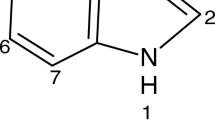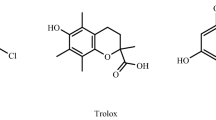Abstract
IN chronic toxicity tests of several derivatives of benzimidazolone, the 5-substituted compounds were well tolerated, with the exception of the 5-tertiary butyl benzimidazolone. This substance caused retardation of growth in rats receiving the standard dose of 500 mgm./kgm./day by stomach tube, with death after 20–25 days of treatment. Hæmatological examination after the onset of the loss in weight revealed a severe anæmia and leukopænia, found at autopsy to be the results of aplasia of the bone marrow. Lymphoid atrophy was also seen; but other tissues showed no change, except for the presence in various organs of large numbers of mitotic figures.
This is a preview of subscription content, access via your institution
Access options
Subscribe to this journal
Receive 51 print issues and online access
$199.00 per year
only $3.90 per issue
Buy this article
- Purchase on Springer Link
- Instant access to full article PDF
Prices may be subject to local taxes which are calculated during checkout
Similar content being viewed by others
Author information
Authors and Affiliations
Rights and permissions
About this article
Cite this article
STOERK, H., ARISON, R. & HAWKINS, J. Antimitotic Activity of 5-Tertiary Butyl Benzimidazolone. Nature 180, 1428–1429 (1957). https://doi.org/10.1038/1801428a0
Issue Date:
DOI: https://doi.org/10.1038/1801428a0
Comments
By submitting a comment you agree to abide by our Terms and Community Guidelines. If you find something abusive or that does not comply with our terms or guidelines please flag it as inappropriate.



